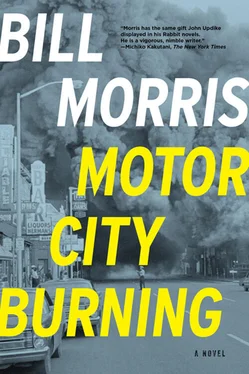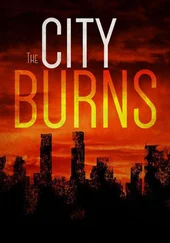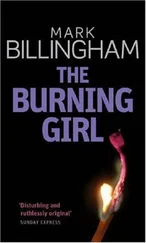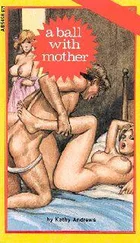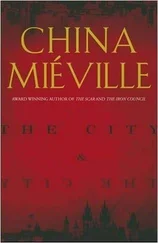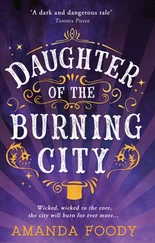And then one day — just like that — it was gone. Vanished. Willie couldn’t believe his eyes at first. He made three laps around the lot to make sure they hadn’t moved the car. It was definitely gone. A fifty-pound sack of sand was lifted from Willie’s back.
At Oakland Hills that night he worked a private cocktail party attended by Chick Murphy and a couple dozen other drunk and boisterous Buick dealers. As the party was breaking up, Willie took an empty glass from Chick Murphy and managed to sound casual as he asked what had become of his old Buick.
“Sold that crate this morning,” Chick Murphy said. “Kid from downriver practically stole it from me, says he’s going to turn it into a hot rod.”
The very next day Uncle Bob dropped by Willie’s apartment for their long-overdue heart-to-heart talk. It took some doing, but Willie managed to convince his uncle that he and Wes had had nothing to do with any shooting from the rooftop of the Larrow Arms; they hadn’t even heard any gunshots. Willie said he’d driven Wes home that night and patched him up because Wes had gotten a vicious beating from the cops who broke up the craps game and shot those people at the Algiers Motel. This finally placated his uncle. Can’t fault a man for looking after family in a crisis. It hurt Willie to dupe a man as decent as Uncle Bob, but he didn’t see that he had any choice.
After his uncle left, Willie spent the rest of the afternoon on his porch admiring the shiny blue ragtop parked at the curb. Seeing his new Deuce in plain view out on Pallister and knowing that his old Buick was gone gave Willie the giddy feeling that he’d slipped the noose. He knew he wasn’t in the clear yet, but he quit waiting for his brother to call from Denver. No detective revisited his uncle or telephoned his mother. Alphonso Johnson’s legal woes became old news, and there was no new news about investigations or arrests related to the riot. Willie even managed to convince himself that during the test drive in the Deuce he’d done a good job of deflecting Chick Murphy’s suspicions about Blythe flirting with the guys at Oakland Hills. It helped that the weather had turned hot and the city was gripped by a strange malady known as pennant fever. All anyone could talk about was the Tigers. As long as they kept winning, Willie felt safe. A new sense of ease possessed him. While he was smart enough to be distrustful of it, he was also desperate enough to be grateful for it. It helped that he’d missed the news about the raid on the Riopelle warehouse.
After working the dinner shift at Oakland Hills several nights later, he was sitting at home listening to some Thelonious Monk and talking to Octavia on the telephone. They talked almost every night now, and he found it strangely soothing to listen to her gossipy monologs about life inside the Motown studios. It was a welcome escape, like watching a soap opera on TV. As the conversation was winding down that night, he was idly thumbing through his files when the picture of him with Bob Moses at the Farce on Washington fell out of a folder and landed face-down on the floor. Only then did he realize there was writing on the back. It said: Two soulful brothers, Bob M. and Willie B., at the March on Washington, August 1963. With love and respect, D.N.
For days the initials tormented Willie. The harder he tried to place them, the dimmer they seemed to grow. His torment was made worse by his hunch that the identity of D.N. might be the key that would finally unlock the door. He kept returning dutifully to the microfilm room at the library, but nothing jogged his memory. He began to feel panicky. Had his brief run of good luck already dried up?
He kept scrolling through newspaper microfilm and reading back issues of magazines, hoping something would reveal the identity of D.N. Finally he came to the edition of the Michigan Chronicle that carried the front-page picture Clyde had mentioned at the Seven Seas. Snapped moments after the Freedom Riders were attacked outside the Montgomery bus station, it showed Willie in the middle of the frame, looking dazed, blood pouring out of his mouth. On the right was a tall lanky white guy named Jim Zwerg, who was reaching into his own bloody mouth for loosened teeth. On the left, looking strangely composed, was John Lewis, his shirt spattered with blood. The accompanying article appeared under the by-line of Moses Newsome, Special to the Chronicle . The same writer from Baltimore who had been interviewing Willie when the fire-bomb came through the Greyhound’s rear window outside Anniston. Willie knew he was getting close.
Two days later the front page of the May 24, 1961, New York Times swam onto his microfilm screen at the library. There was a picture of Jim Farmer, Ralph Abernathy, Martin Luther King Jr., and John Lewis at a press conference in Montgomery, announcing after three days of fierce debate that the Freedom Riders would continue from Montgomery into Mississippi and from there on to their original destination, New Orleans. Though Willie was certain he had never seen the picture before, it looked familiar. It was spooky, like déjà vu before the fact. He kept staring until it hit him: He had been standing next to the man who took the picture. He had seen the picture before it was a picture. Now Willie remembered the photographer — a big sweaty white guy named Larry something who worked for the Associated Press and wore a pistol on his hip to discourage people from messing with him or his cameras.
The most arresting detail in the photograph was the bandage on John Lewis’s head, which covered the gash where he’d had his skull cracked during the melee at the bus station. The sight of that bandage was enough to make Willie’s lip throb. He kept studying the four Negroes sitting at the table full of microphones. Jim Farmer was at the top of the frame. The head of a New York group called CORE, Farmer had come up with the idea of the Freedom Rides as a way of testing new desegregation laws on interstate bus routes in the Deep South. He was on one of the buses that left Washington, D.C., on May 4. He rode as far as Atlanta but had to return to Washington for his father’s funeral. When the story started making national headlines — that is, when buses and riders started getting photogenically attacked — Farmer had flown from Washington to Montgomery, eager be part of the blossoming coverage. Willie and his fellow riders distrusted Farmer instinctively. To them he looked like an overfed businessman who’d gotten off a plane at the wrong airport.
Next to Farmer sat solid, decent Abernathy, who, as always, looked like he was melting from the glare of all this unwelcome publicity. Next to Abernathy sat King, who had flown in from Atlanta for the mass meeting at Abernathy’s church the night after the riot at the bus station. To King’s left sat John Lewis, the only Freedom Rider in the picture, the only one of the four who had put his body on the line.
Willie’s eye went back to King’s face, that smooth patrician face, so at home in front of all those cameras and microphones. Then Willie heard that voice again, that satiny voice. This time it said, Where is your body, Dr. King?
And when he heard that voice, he knew what D.N. stood for. Of course: Diane Nash.
She was part of Snick’s Nashville contingent, a student at Fisk University, a light-skinned, green-eyed beauty who Willie had first met back in 1960 when he dropped out of Tuskegee and went to Nashville to learn the art of nonviolent protest and help with the downtown sit-ins. The woman had an aura about her. Once, during the lunch-counter sit-ins, she’d walked up to the mayor of Nashville and asked him point-blank: “Do you feel it’s wrong to discriminate against a person solely on the basis of their race or color?” The mayor, flummoxed, allowed that, yes, as a matter of fact he did feel it was wrong. His admission made national news. Action didn’t get any more direct than that. Later, Diane got thrown in jail when she was pregnant. Like everyone in Snick, Willie revered her.
Читать дальше
